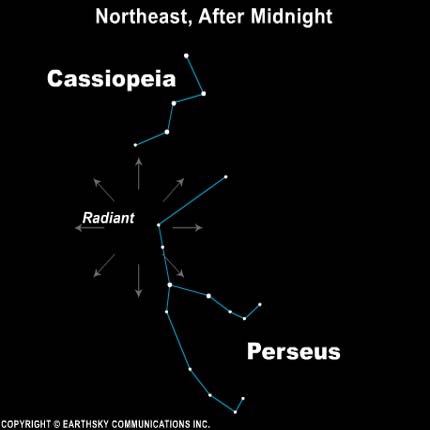
In this remarkable photograph we see the Perseid meteor shower observed from the Snowy Range in Wyoming. The photograph was taken the night of August 11th, 2012, by professional photographer David Kingham. The Perseids are a prolific meteor shower associated with the comet Swift-Tuttle. The Perseids are so-called because the point from which they appear to come, called the radiant, lies in the constellation Perseus. The stream of debris is called the Perseid cloud and stretches along the orbit of the comet Swift-Tuttle. The cloud consists of particles ejected by the comet as it travels on its 130-year orbit. Most of the dust in the cloud today is around a thousand years old. However, there is also a relatively young filament of dust in the stream that was pulled off the comet in 1862. The shower is visible from mid-July each year, with the peak in activity being between August 9 and 14, depending on the particular location of the stream... Perseids are primarily visible in the northern hemisphere. [Source: Wikipedia]
***
The peak dates of this year's Perseid Meteor Shower, August 11 and August 12, coincide with a crescent moon and early moon-set - two circumstances that enhance viewing.
Expect 80 to 100 meteors per hour.
Visibility will vary according to cloud cover and light contamination.
Expect 80 to 100 meteors per hour.
Visibility will vary according to cloud cover and light contamination.
Depending where you are in the world, the number of meteors to be seen will range from 20 to 120 per hour.
Tips for best Perseid viewing experiences:
- Find an unobstructed area free of structures.
- Get away from city lights.
- Avoid telescopes and binoculars as they will limit your vision.
- Once settled in a spot - a blanket and pillows are recommended - look toward the northeastern sky.
- Try to locate the constellation Perseus as the meteor shower will be in that general direction.
- Do not look straight up into the sky.
- Be patient. If the night is clear, light pollution limited, and the time "ripe," you should see your first meteor within 5 minutes. At times, you will see multiple meteors in a sixty second span.

In order to determine the best time to see the Perseid meteor shower in a given location, check SpaceDex.com which provides viewing guides for all 50 states, 10 Canadian provinces and over a hundred countries worldwide.
Remember. This year's Perseid Meteor Shower promises fine spectacle.
Don't miss it!
Don't miss it!

No comments:
Post a Comment